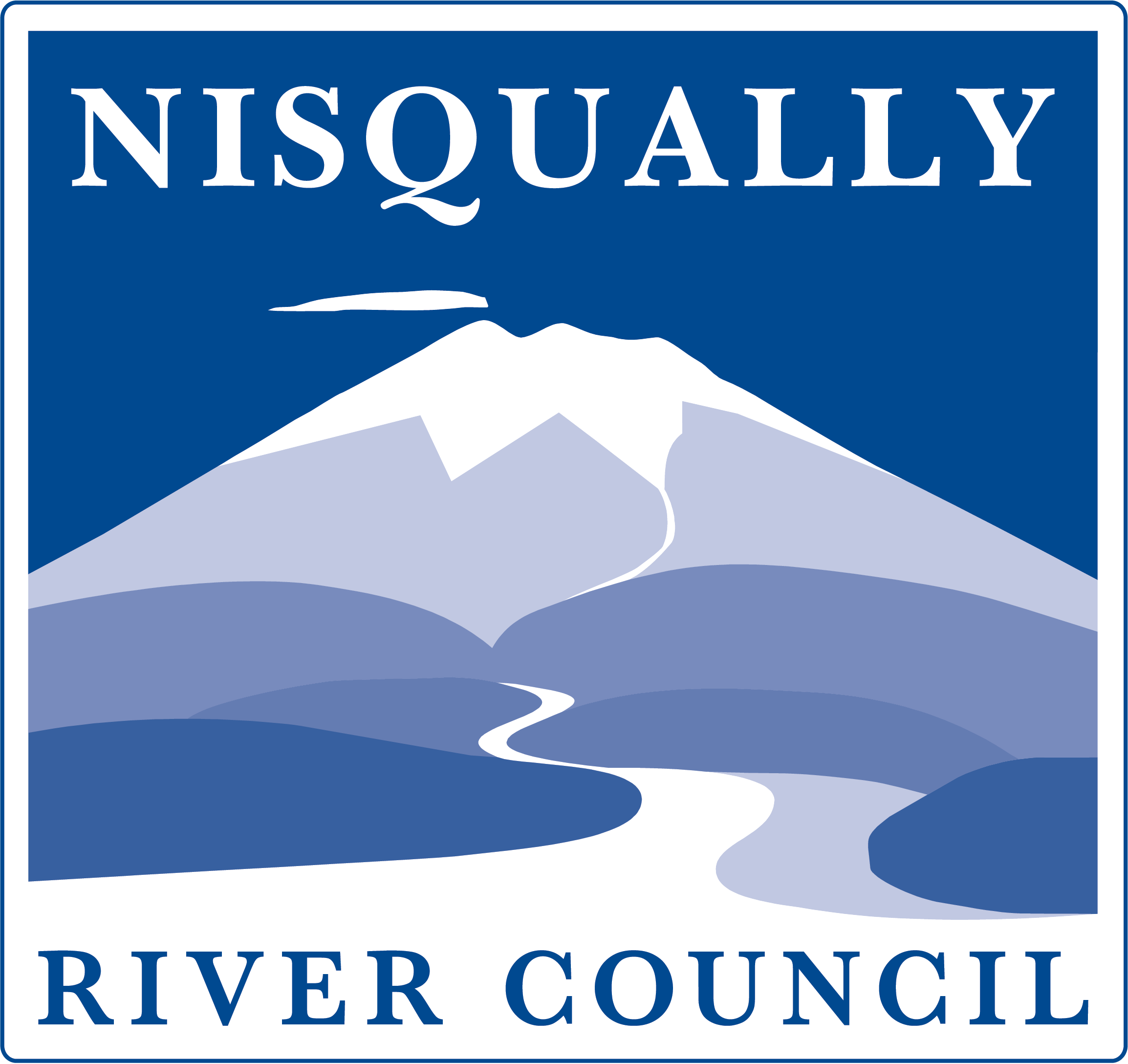

“If you don’t work from your passion your product is sub-standard,” Randi Korn from RK&A, project evaluator for The Wild Center working in upstate New York, told a group of committed environmental educators. In a single room at the National Oceanic and Atmospheric Administration (NOAA) headquarters outside of Washington D.C., educators who worked with inner-city youth in Brooklyn personally affected by Superstorm Sandy learned alongside teachers from the 2,400 square mile Chugach School District in bush Alaska. Over 20 organizations, either current or new grant recipients, from across the United States and Virgin Islands participated in NOAA’s Environmental Literacy Program Resilience Workshop. Despite the vast geographic, social, and environmental differences between the educators and their constituents, we were united by our passion for our work and commitment to climate education.
Emily and myself were there representing Nisqually River Education Project and the project we developed with this funding, From Mt. Rainier to the Pacific Coast: Fostering Resilient Climate Leaders, Communities, and Coastal Ecosystems. We partnered closely with South Sound GREEN, the Chehalis Basin Education Consortium, and Mount Rainier Institute for this project. Our project included Summer Institute for Teachers, Climate Resiliency Fellows program for teachers, Climate Resiliency Action Projects, and Climate Resilient Youth Leadership Program. All components of the project centered on professional development and empowerment for teachers, and work with students and teachers to implement action projects in their communities. As the project title suggests, our work spanned from the mountains to Puget Sound, creating an effective and compelling setting in which to learn about climate change and adaptations.

We–as humans on planet Earth–are all experiencing climate change in different ways. The Louisiana Bayou is flooding from sea level rise, with some areas disappearing altogether. The desert southwest is becoming increasingly arid. The Watershed Management Group in Tucson, Arizona is working to harvest rainwater to restore the Santa Cruz River, which currently does not flow due to extremely low water levels.
According to the Fourth National Climate Assessment, Washington state is projected to have some of the worst drought conditions across the country. Some areas along Puget Sound are expected to feel dramatic effects of sea level rise. Increased temperature will cause more rain rather than snow, impacting glacial ice melt and stream levels throughout the year. We, in the Nisqually watershed, are not separate from the impacts of climate change. To comprehend and combat climate change, we must begin at the local level.

Somehow, despite the very heavy topic of this conference, the overall tone was not one of dread and pessimism, but rather one of hope and optimism. Beyond education grant recipients, we also heard from scientists studying the impacts of climate change. The most powerful message, however, came from us all. Among the 45 participants at the conference, only two were non-white. Environmental injustice permeates the world, and by the end of the conference we had all made commitments to address this major social issue within our work. Climate change is not a scientific issue alone; we can no longer ignore the social issues entangled within climate change. Progress seemed to be happening before our eyes in this regard. The new grantees who presented had a clear emphasis on environmental justice, working in the US Virgin Islands, a school district in remote Alaska, and a tribal college in Minnesota. I left excited that NOAA, a large, powerful federal agency within the environmental field, explicitly expressed their commitment to increasing environmental equality and justice within their funded programs.
“Knowledge is only potential power:” I walked past this Napoleon Hill quote painted on an old board outside of my Environmental Studies building on the University of Montana’s campus daily. I could go to class, pass tests, take precise notes, but I was not powerful until I took action. The same applies now to my professional career, and my life as a responsible member of the Earth community. This is the common concept I saw emerge from all of the programs from which we learned: our shared goal as educators is to not just teach students, but to empower them to take action. Students have an impact on their families; families have an impact on their communities; communities have an impact on their state and regional governments.
I returned to the Nisqually watershed ready for the challenges ahead. I am excited to be part of the work that is addressing the educational, social, and scientific issues of a changing climate, and am eager to turn my new knowledge into power.
Submitted by Chrissy Webb, Washington Service Corps volunteer with Nisqually River Education Project.



One thought on “Inspiration and Empowerment from NOAA’s Environmental Literacy Program”
Thank you for sharing your experiences and reminding us that we are all citizens of the world and we need to work together to restore balance to our beautiful Mother Earth.